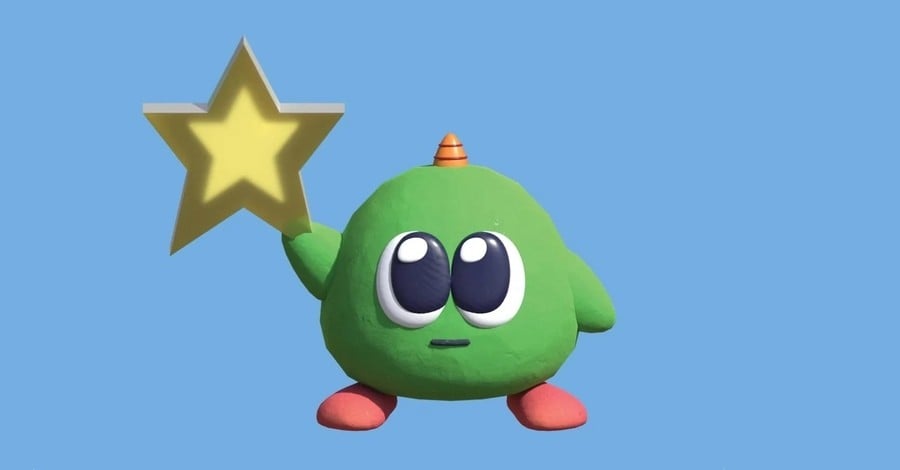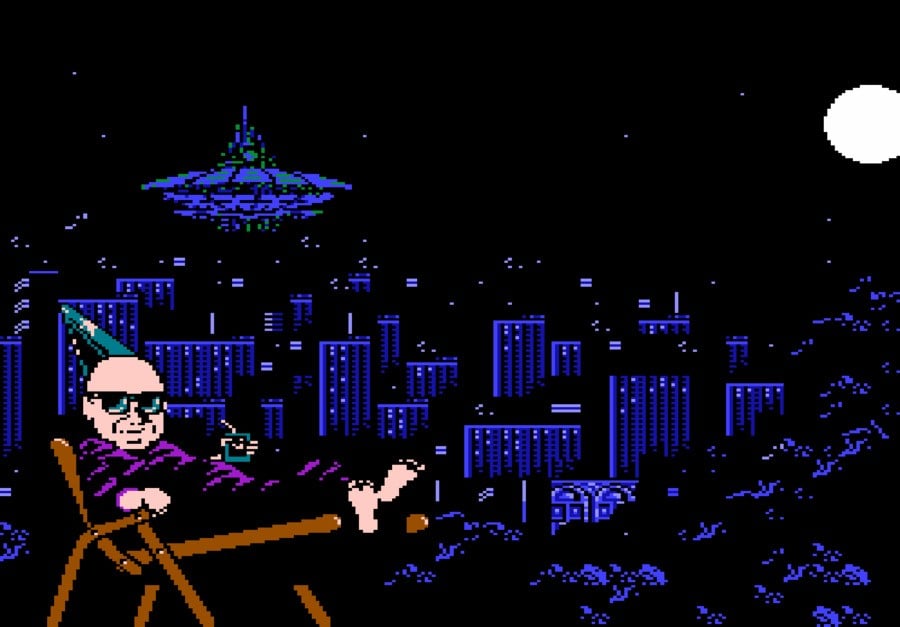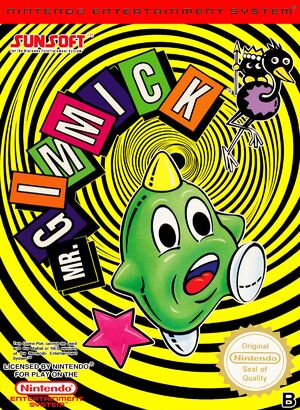
The Famicom / NES platformer Gimmick! fits the definition of a video game cult classic to a tee.
Originally released in Japan in 1992, at a time when the Super Famicom was already available, the game pushed the boundaries of what many thought the original Famicom was capable of, featuring physics that were uncommon for the platform, in addition to incredibly detailed graphics (achieved using advanced tileset algorithms), and enhanced sound (that took advantage of Sunsoft's 5B audio chip). But, despite that, it never ended up getting a North American or UK release, with the title only ever receiving a limited release for the NES under the name Mr. Gimmick in Scandinavia in 1993 (with a slightly altered soundtrack to make up for the cartridge being manufactured without the additional chip).
Nevertheless, the reputation of the game has grown significantly among Nintendo fans in the years since, leading it to experience a remarkable resurgence in popularity. Off the back of this, Bitwave Games and its original publisher Sunsoft have since released a couple of new games in the series, including a worldwide remaster of the original for Nintendo Switch, PlayStation 4, Windows, and Xbox One in 2023, entitled Gimmick! Special Edition, and a sequel named Gimmick! 2, which was released earlier this month. However, both of these were made without the involvement of the original designer Tomomi Sakai who has largely been kept out of the loop and remains absent from any marketing materials.
With this in mind, we decided to reach out to Sakai to ask for his thoughts on the new game, how he initially began working at Sunsoft, and the making of the original Famicom / NES title — and luckily, he agreed to answer some of our questions. You can read our exchange with Sakai below, which was carried out over email over the last couple of weeks:
Time Extension: When did you become interested in making games? What were the earliest games you created?
Sakai: The first time I became interested in making games was when I saw Taito’s Lunar Rescue. I thought games could be a way to express a world.
The first game I made was a rock-paper-scissors game. I bought a BASIC programming guide on my way home from school, read it at home, and the next day I used the school's computer on-site to create it as a study exercise.
Time Extension: How did you get the job at Sun Electronics/Sunsoft? What was the company like at the time you joined?
Sakai: In school, I had a classmate named Masahiro Terao, and he scouted me. At the time, he was gathering talented staff to build the new generation of Sunsoft.
Sunsoft had been releasing games even before I joined, but the production structure changed significantly around the time I entered. It was the moment when the new generation of Sunsoft began. Everyone was highly motivated.
Time Extension: After making small games like the Rock Paper Scissors title, did you expect to become a professional game developer? Or did you only consider that once your classmate asked you to join Sunsoft? Did you have any other career aspirations outside of games?
Sakai: After the rock-paper-scissors game, the next one I made was an arcade-style game. At the time, arcade games were simple, so I made countless games like that while I was in high school. The teacher who supervised my club (I was in the science club because we were allowed to use computers) told me that my work could be turned into a product. When I displayed one at a school festival, my classmates told me I could become a professional. Of course, there were also many who said it would never happen. But by that time, I had already decided I would become a professional.
When I displayed one at a school festival, my classmates told me I could become a professional. Of course, there were also many who said it would never happen. But by that time, I had already decided I would become a professional.
Time Extension: You mentioned the production structure at Sunsoft changed when you joined. How did it change? Could you be more specific?
Sakai: I only know what I’ve heard about Sunsoft before I joined, so I can’t say how accurate it is, but initially, Sunsoft was making arcade games with very small teams. When they started developing for the Famicom, there was a high ratio of outsourced work. Just before I joined, they started hiring more people and began full-scale in-house development.
Time Extension: Online you’re credited with working on a few titles prior to Gimmick! MobyGames, for instance, lists Nazo no Magazine Disk: Nazoler Land Sōkan Gō, Nazo no Magazine Disk: Nazoler Land Dai-2 Gō, Freedom Force, Benkei Garden, Fester’s Quest, Lemmings and Trip World as projects you contributed to.
Do you have a favourite from this list? Are there any they missed? Or are there any of the above that are incorrect?
Sakai: Checking MobyGames, it seems like there’s someone with the same name mixed in.
I think the list is correct. I was part of the team for Fester’s Quest and Freedom Force (as a programmer). For the others, I only helped a bit or gave some advice. Gimmick! is the only game I did the game design for.

Time Extension: Do you remember how the original idea for Gimmick manifested?
Sakai: People always ask me this, but there wasn’t really a specific thing that directly inspired Gimmick.
Time Extension: You mention there was no specific influence behind Gimmick, but I’m curious what was the initial origins of the game? Did you have an idea and then you pitched that to Sunsoft? Or was Sunsoft specifically looking to create another platformer and you volunteered to lead the project and the team made it their own?
Sakai: Before Gimmick, I was basically doing whatever the company told me to do. In other words, I was just a programmer, and I had very little input. So I kept saying, “I could make a better game if I had full control.” Eventually, they told me to go ahead and try once, and that’s how Gimmick! came to be. It wasn’t until I got the go-ahead that I started thinking about what kind of game it would be.
Time Extension: Did you consider any other types of genres before starting work on Gimmick? What appealed to you specifically about making a platformer?
Sakai: I didn’t consider any other genres. I don’t remember why, but I decided from the start to make a platformer.
Time Extension: How was the character design for Yumetaro born? Were there any other designs considered for the character other than the classic one we know today?
Sakai: Yumetaro was like that from the beginning. The one I drew was a bit more elongated, but when I had [the co-character designer & artist Hiroyuki] Kagoya draw it, it turned into the Yumetaro we know today. There weren’t any other designs.
Time Extension: If we're correct, the game was being developed for the Famicom/NES at a time when the Super Famicom/SNES was already on the market. Did you have any worries about how commercially viable the project would be because of that fact?
Sakai: Gimmick! took about three years to develop, which was quite long for the time. When we started, the Famicom was still dominant, but as we neared completion, the Super Famicom was announced, which made the marketing situation tough.
Time Extension: Is that because the press (and retailers) had mostly moved on to focusing on 16-bit machines by that point?
Sakai: In Japan, the success of a game largely depends on how much the distributors buy. They didn’t care about the quality of the game; they only cared about what was making headlines. In my experience, most of them were only interested in making money and couldn’t actually judge whether a game was good or bad.
Time Extension: Could you explain some of the techniques you used to get around the Famicom hardware’s limitations? Particularly in regards to its graphics and sound.
Sakai: For the graphics, we animated the backgrounds by switching them with a special chip installed in Sunsoft cartridges. Sometimes people say the graphics look good because of the special chip, but that’s incorrect. The performance of the graphics didn’t change; it’s simply due to Kagoya’s exceptional skill as an artist.
For sound, we added a three-voice expansion chip to express [Masashi] Kageyama’s music. The Scandinavian version doesn’t have this, so it should be just the Famicom’s original sound.
In the end, I believe the most important thing is who made it.
Time Extension: Something that is mentioned a lot in relation to Gimmick today is its difficulty. Were there any conversations about the difficulty maybe being too hard prior to its release?
Sakai: Not really. The other teams at Sunsoft were playing Gimmick just fine. However, when we exhibited it at a show, some people couldn’t play it well. So, I made a version with easier level designs, but in the end, they still couldn’t. After investigating, we found that the people who couldn’t play Gimmick! couldn’t keep up with Yumetaro’s movement. At that time, no Famicom game had movement where gravity affected acceleration on slopes, so players couldn’t adapt to it (the same applies to other physical movements in the game). But once you get used to the movement, I don’t think it’s particularly hard for games of that era, especially for those who’ve played arcade tabletop games.
After investigating, we found that the people who couldn’t play Gimmick! couldn’t keep up with Yumetaro’s movement. At that time, no Famicom game had movement where gravity affected acceleration on slopes, so players couldn’t adapt to it.
For beginners, though, it might seem difficult at first, so I recommend they train with other platformers first.
One more thing: Gimmick! is harder to play on an emulator. It was designed to be responsive on the Famicom hardware.
Time Extension: What was the reception like to Gimmick when it was first released in Japan? Were Sunsoft happy with the game? Was there ever any talk of a sequel/port for the Super Famicom or other machines?
Sakai: By the time Gimmick! was released, I had already left Sunsoft, so I’m not sure. The internet wasn’t as developed back then either, so it was difficult to get real-time feedback on the game's reception.
Time Extension: Why did you end up leaving Sunsoft prior to the game being released? Were you working on any projects when you left?
Sakai: It’s because they rewrote Gimmick’s opening without my permission and removed my name. The fact that TOMOMI SAKA“E” still appears in the ending is a trace of that incident. I believe their intention was to remove staff names from visible areas to prevent headhunting.

I wasn’t working on any other projects when I left. I had a huge fight with the management, so I think they expected I would quit. Kagoya actually quit before I did. He was furious and even said he was going to crash his car into Sunsoft’s gates.
Time Extension: Do you happen to have any insights into why the game was only ever released in Japan and Scandinavia? And not say, the States or the UK?
Sakai: It was originally planned for release in the U.S. too. The person at Sunsoft of America (I think he was a former game magazine editor) had high praise for Gimmick! and thought it would sell in the U.S. But for some reason, it wasn’t released.
What I later found out was that the management decided not to proceed because they thought the character was too strange and wouldn’t sell.
Time Extension: There was recently a sequel made to Gimmick! by a Scandinavian developer named Bitwave Games. How did you feel when you heard about this project as the original creator?
Sakai: Gimmick! is a completed work, so I can’t imagine there being a sequel. It’s like how Studio Ghibli movies don’t have sequels. I consider it an entirely unrelated work made by someone else.
Time Extension: Bitwave recently issued a public apology over not contacting you while working on the project. Have they contacted you since to make amends?
Sakai: They offered to list the Gimmick team in the special thanks, but I declined since I had no involvement.
However, Kageyama’s music, though arranged, was used, and while I’m not sure if his name will be listed, I believe that his name should be included as one of the composers.
